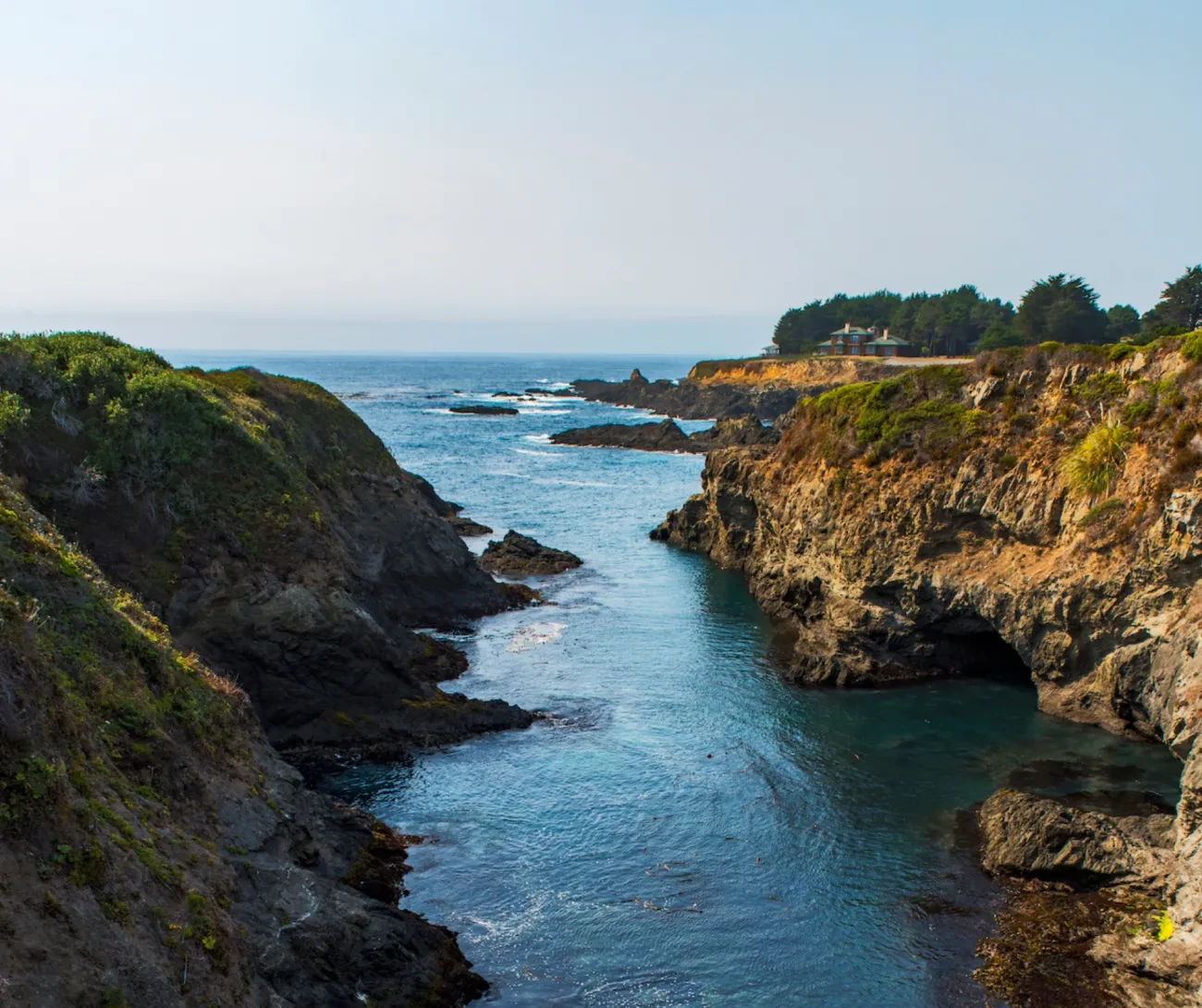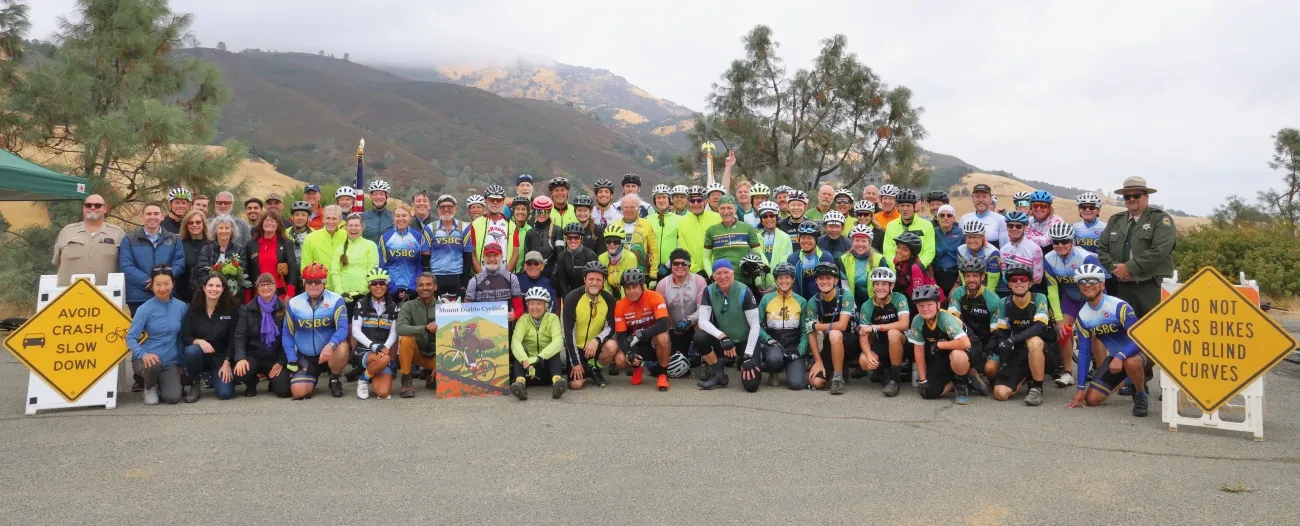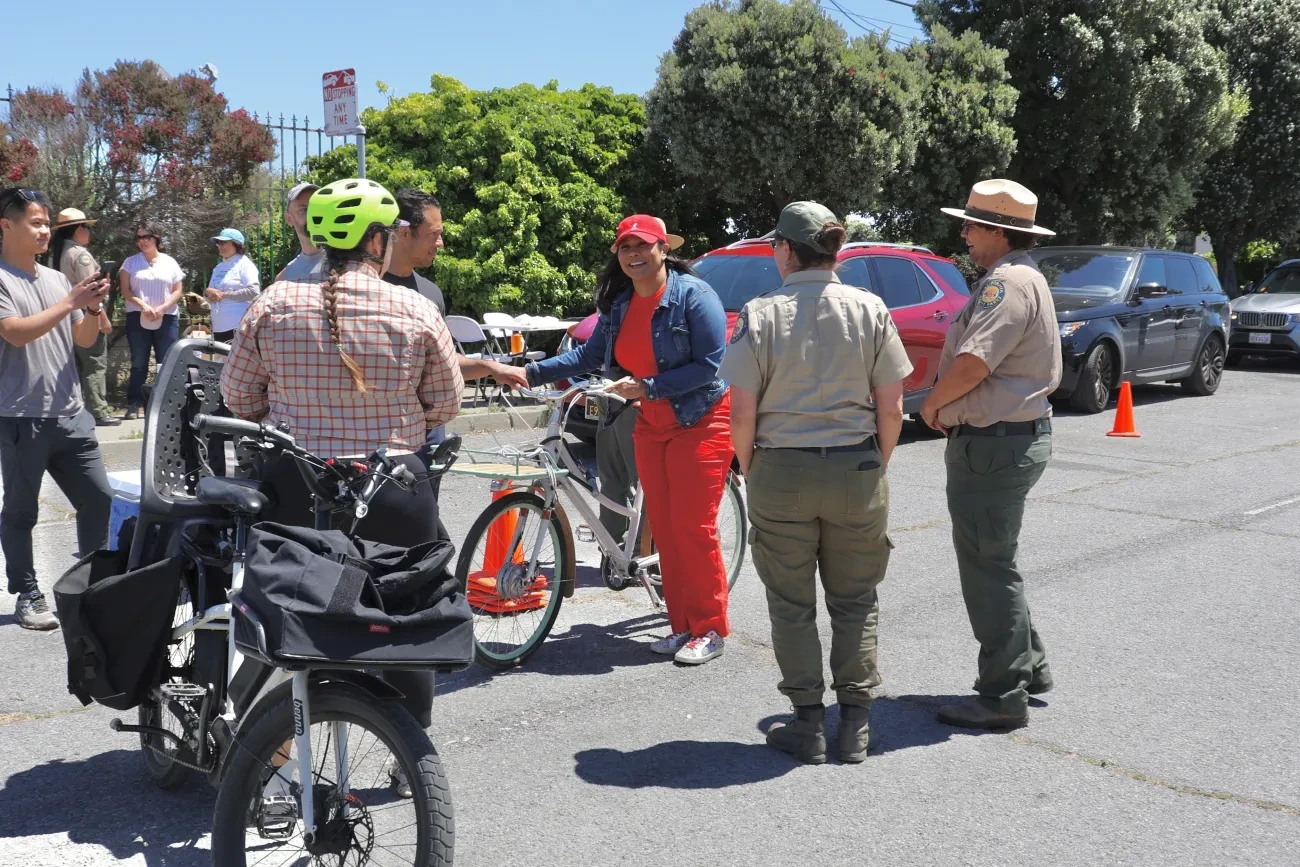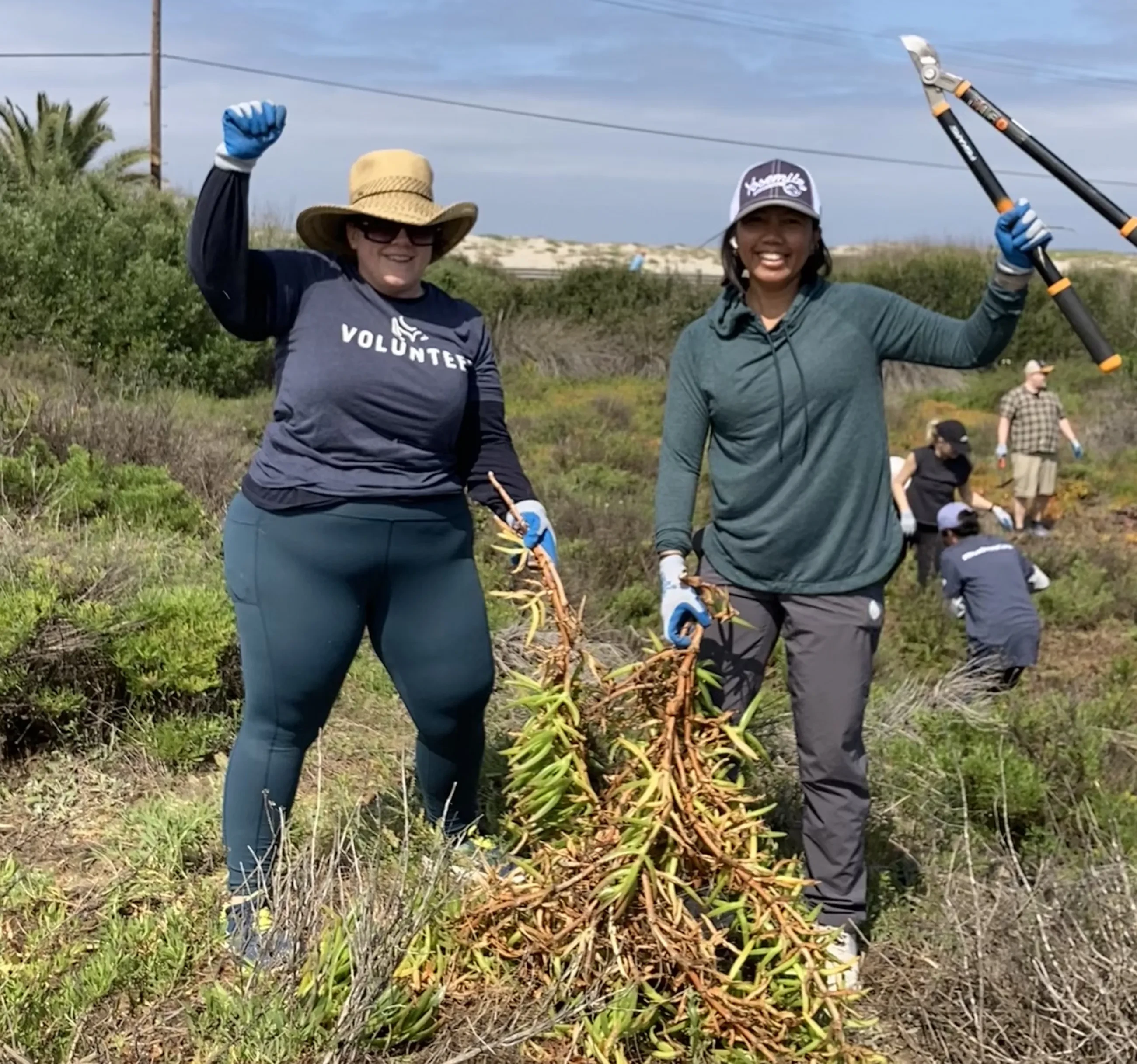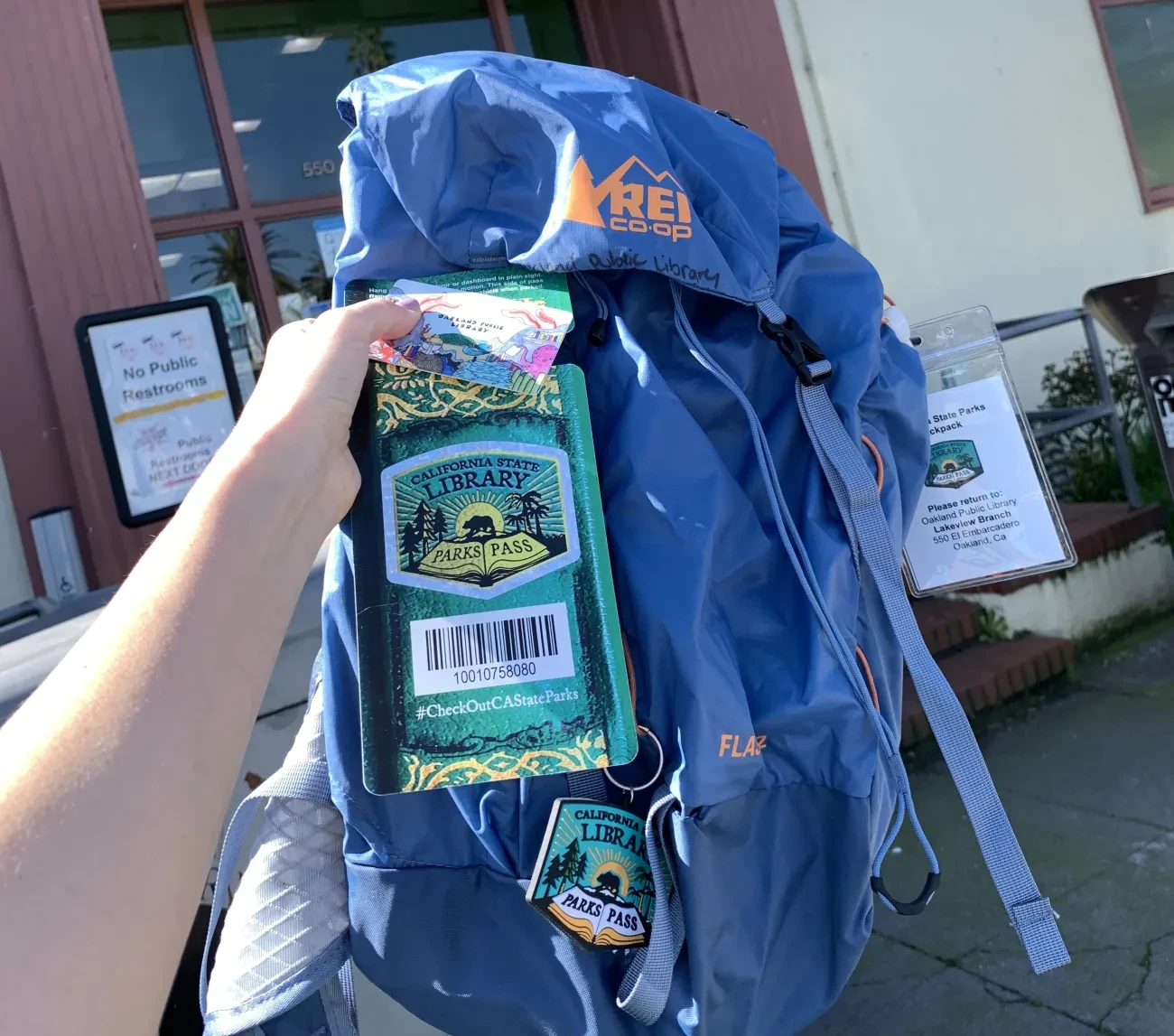Over our last fiscal year, from July 2023 to June 2024, we’ve had much to celebrate! This year, we worked closely with California State Parks and other park partners to drive meaningful change in California state parks for the benefit of all. Whether you’re reading this at the office, at home with your family of park lovers, or nestled at the base of a redwood tree, thank you for helping us create a brighter future for our state parks!
We’re excited to share some of our biggest wins from the past fiscal year. Read about these stories and more in detail in our annual report here.
#1: A groundbreaking report on climate change and state parks' role in fighting it
We released our report “Building a Climate-Resilient California State Park System: Preserving Parks for Future Generations,” which offers a clear road map for creating a state park system that is adaptable to the growing threats of climate change. From severe wildfires devastating forests to rising sea levels eroding coastlines, the effects of climate change are causing unprecedented damage. Our climate report outlines these challenges and provides tangible, strategic solutions to enhance the resilience of our parks.
Jay Chamberlin, Chief of California State Parks’ Natural Resources Division, underscored the report’s value: “California State Parks Foundation is to be commended for compiling an accessible and accurate description of the burgeoning impacts of climate change on the state park system’s natural, cultural, and recreational resources, while ably summarizing California State Parks’ various efforts to build climate resilience.”
Our advocacy for Proposition 4 — a $10 billion climate bond — also reflected our commitment to securing long-term support for parks’ climate resilience. We were overjoyed to see our advocacy efforts pay off when Prop 4 passed in November 2024! The bond will provide essential funding and legislative backing for our ongoing work in climate resilience.
#2: Safety improvements at Mount Diablo State Park
The main road to the mountain summit at Mount Diablo State Park boasts a popular cycling route — made treacherous as cyclists share this steep, winding road with cars. Recognizing the need for safety improvements, California State Parks Foundation and other advocates raised over $750,000 to build bike turnouts along the route, allowing cyclists to safely pull out of the lane of traffic and avoid potential collision.
One such cyclist, 86-year-old Joe Shami, tragically died in while biking in his nearby hometown. Joe left an extraordinary legacy: a donation of $123,415.61 in his will to California State Parks Foundation, designated for improving cycling safety at Mount Diablo, his favorite state park.
To honor Joe’s legacy, California State Parks Foundation launched a fundraising campaign, raising an additional $508,259.26. California State Parks used the funds to build 22 additional bike turnouts, bringing the total on the park’s main road to 67. This summer, our staff joined supporters and the local cycling community to celebrate the opening of this latest phase of this project.
“Our efforts — your efforts — have paid off!” exclaimed Alan Kalin, a friend of Joe’s and a leader at Mount Diablo Cyclists, during a celebratory speech at the event. “Bike turnouts have reduced bike-vehicle collisions by over 80%. Every bike turnout has the potential to prevent a collision and save a life.”
#3: Addressing flooding at Candlestick Point State Recreation Area
Candlestick Point State Recreation Area is a unique and vibrant urban green space.
Unfortunately, the low-lying coastal park is prone to flooding which has affected the park for several winters, creating hazardous stagnant water and permanently damaging the main entrance.
To address this, we organized a sign-on letter with partners to alert the city government to the issue and initiated an action alert, urging support for efforts to remove these hazards and improve park access. Our advocacy led the San Francisco government to pump out the remaining floodwaters and establish a protected bike and pedestrian lane dedicated to enhancing local access.
This successful winter of advocacy culminated in a spring of celebration. Over three events in the park, volunteers removed invasive plants, park staff moved K-rail to create a safe walk and bikeway, and community artists painted colorful murals around the park.
Our work at Candlestick Point State Recreation Area continues. Addressing the impacts of climate change and underinvestment is central to our mission. As California State Parks Director Armando Quintero said, “California State Parks Foundation has been doing what I think of as work of the heart for over 30 years, raising awareness and funding, organizing public activities, and advocating for Candlestick Point State Recreation Area.”
#4: Over 10,000 Hours of Volunteers Improving Parks and Trails
If it takes 10,000 hours to become an expert at something, then the past year has shown the growing expertise and incredible dedication of our California State Parks Foundation volunteers. Over the last fiscal year, we’ve continued to grow our capacity and impact, hosting 119 volunteer workdays across 29 parks.
To put these incredible numbers in perspective …
- 10,410 hours of volunteer service — If one person had done all this work alone, it would take them about one year, two months, one week, and 15 hours to complete it — straight, with no breaks to eat, sleep, work, or play.
- 173 Bags of trash and recycling — This is almost two years’ worth of combined trash and recycling for the average California resident.
- 1,593,813 Ft2 of invasive species removed — This is 36.5 acres or about 204 times the size of the average backyard in California.
- 5,287 plants planted — This is enough to sell out the nursery at a medium-sized hardware store.
- 4.42 miles of trails restored — This is about as long as Eagle Rock Loop Trail in Topanga State Park, which can take folks around 2–3 hours to hike.
- 2,024 unique volunteers — If we brought all these people to a park together, we’d need about 253 picnic tables to seat them comfortably. For reference, we would need almost every single picnic table in all of Lake Perris State Recreation Area (which is 8,800 acres).
#5: Saving the California State Library Parks Pass
This past year was a whirlwind for the California State Library Parks Pass, a California State Parks vehicle day-use pass that grants free entry to over 200 state parks for free to library card holders.
The pass is a widely successful program, increasing access for individuals for whom the state park entry fee is a barrier. Given the popularity and importance of this program, we were disheartened to learn that it was not included in the initial draft of Governor Newsom’s state budget.
Recognizing the urgency, we immediately launched petitions urging the state government to reinstate $6.5 million for the California State Library Parks Pass. Unfortunately, the funding was not included in the May Revise budget. We then encouraged our supporters to contact their legislators directly, requesting a reduced amount to maintain the program at a lower level of service. This time, our collective voices made a difference.
A full $6.75 million was restored in the state budget, ensuring library patrons can check out state parks passes through December 2025. We were thrilled to see this outcome, but our work is far from over. As we move into the next fiscal year, we are committed to securing permanent funding for the program, so we don’t have to take you on this whirlwind journey year after year.
